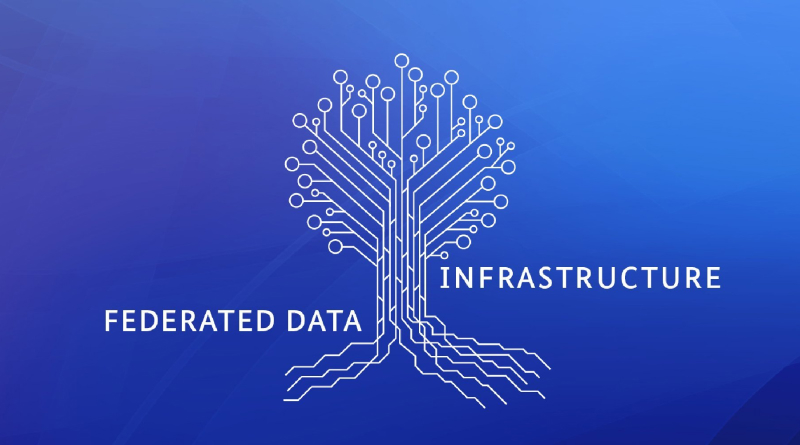Getting to know more about Gaia-X
Gaia-X is a European initiative that aims to create an open and secure data infrastructure, complying with digital sovereignty standards. Gaia-X aims to act as a digital, federated and transparent ecosystem where data and services can be made available, collected and shared in a trusted environment.

What is a data space?
A data space is an ecosystem where the voluntary sharing of its participants’ data is realised within an environment of sovereignty, trust and security, established through integrated organisational, regulatory and technical governance mechanisms.
- The data space builds stakeholder trust , generating value-added relationships between stakeholders and enabling a data processing ethic.
- The data space, as a data sharing ecosystem, ensures the sovereignty of the participants over their data.
- The data space pays particular attention to all aspects of data security.
- The data space makes it easier to find, access and use data, under FAIR principles (findable, accessible, interchangeable, reusable).
- The data space, to ensure its proper functioning, will have mechanisms to ensure the quality level of the data and will facilitate the development of semantics and vocabularies.
- The data space will ensure synergies and interoperability with other data spaces.
- Data are the most valuable asset for many companies and are key to the development of their economic activity. Its correct analysis and processing make it possible to make appropriate decisions and to generate new products and services within the company.
- The data economy is born and develops as a result of the increasing generation of data from various sources, both in the business and personal sphere.
Gaia-X and data spaces
Gaia-X encourages the creation of data spaces that stimulate growth, innovation and competitiveness.
It establishes common rules of behaviour (data sharing, federation and compliance) to create a trusted environment for sharing data, connecting different application and service providers with the owners of this data (ecosystems) and providing the means for secure, transparent, reliable and interoperable information sharing(infrastructure).
Depending on its objectives, each Gaia-X pillar implements its own functional and technical specifications, which are translated into the development of software components.

The three pillars of Gaia-X are:
- Compliance: which establishes and defines the mechanisms necessary to ensure compliance with common rules of behaviour in the data spaces, based on trusted European values.
- based on European values of trust and confidence.
- Federation: which enables the secure and reliable exchange of data and services, not only between members of the data space itself, but also between different sectors or ecosystems.
- Data exchange: which provides the means to perform the actual exchange of data and to keep track of the negotiation of data usage contracts at the infrastructure layer.
Gaia-X and the Trust Framework

The Trust Framework reflects the evolution in the development work on the specifications and components of the three pillars of Gaia-X: compliance, federation and data exchange.
The framework is based on the use of verifiable credentials as a mechanism to achieve the initiative’s proposed goals of secure, transparent, trusted and interoperable sharing of information.
- Its use is defined by the World Wide Web Consortium (W3C), which develops internationally accepted standards and guidelines for the construction of an Internet based on the same values of security and transparency that Gaia-X pursues.
- Verifiable credentials are a set of claims or assertions about something, signed by the information provider using digital certificates and validated by a trusted entity, accepted by all participants that are part of the data sharing ecosystem (regardless of their role).
- Once generated, credentials are used to provide security and trust in the exchanges of information and processes that take place in the data space. According to the Trust Framework, we can distinguish between participant and service offering credentials.
- The software components (also called compliance services, which are operated in the so-called Gaia-X Digital Clearing House) developed in each work area are responsible at all times for validating the correctness of these credentials and that they conform to the specifications described in the areas of compliance, federation and data exchange that form the Gaia-X framework.
Participants and Services
The participants (usually legal entities) form the data space itself and are accredited within the ecosystem through their verifiable participant credentials.
Two fundamental roles can be distinguished:
- Provider: who manages resources within the ecosystem that together to compose a service offering, offers and makes accessible to the other participants through the use of verifiable credentials.
- Consumer: who is a participant that searches for service offers in the ecosystem and consumes them according to his or her needs.
A service offering consists of a set of resources that a provider manages and publishes in a service catalogue so that it can be consumed by the rest of the participants in the data space.
Each service offering must have an associated credential, which contains both the claims describing the service itself and the terms and conditions of use and access policies for the service.
Gaia-X Digital Clearing House
These are nodes that run the software components that, developed in accordance with the specification documents in the Trust Framework, allow the generation and checking of the validity of verifiable credentials that identify both the participants in the data space and the service offers that are part of it.
Each node is operated by a service provider according to rules defined by the Gaia-X Association AISBL, which delegates its governance to the different providers. This decentralised, open and transparent operating approach allows the creation of data spaces that ensure the sovereign, secure and reliable sharing of information.
In addition, the nodes can also offer other additional functionalities and tools, such as the Wizard Service, a catalogue in which to make our service offerings available in the ecosystem, or a Wallet or digital wallet in which to store our verifiable credentials.
More information
If you are interested in finding out more about Gaia-X, be sure to visit the Gaia-X european website, as well as the official documentation on the framework.
Header image: Data Center Dynamics (DCD).





